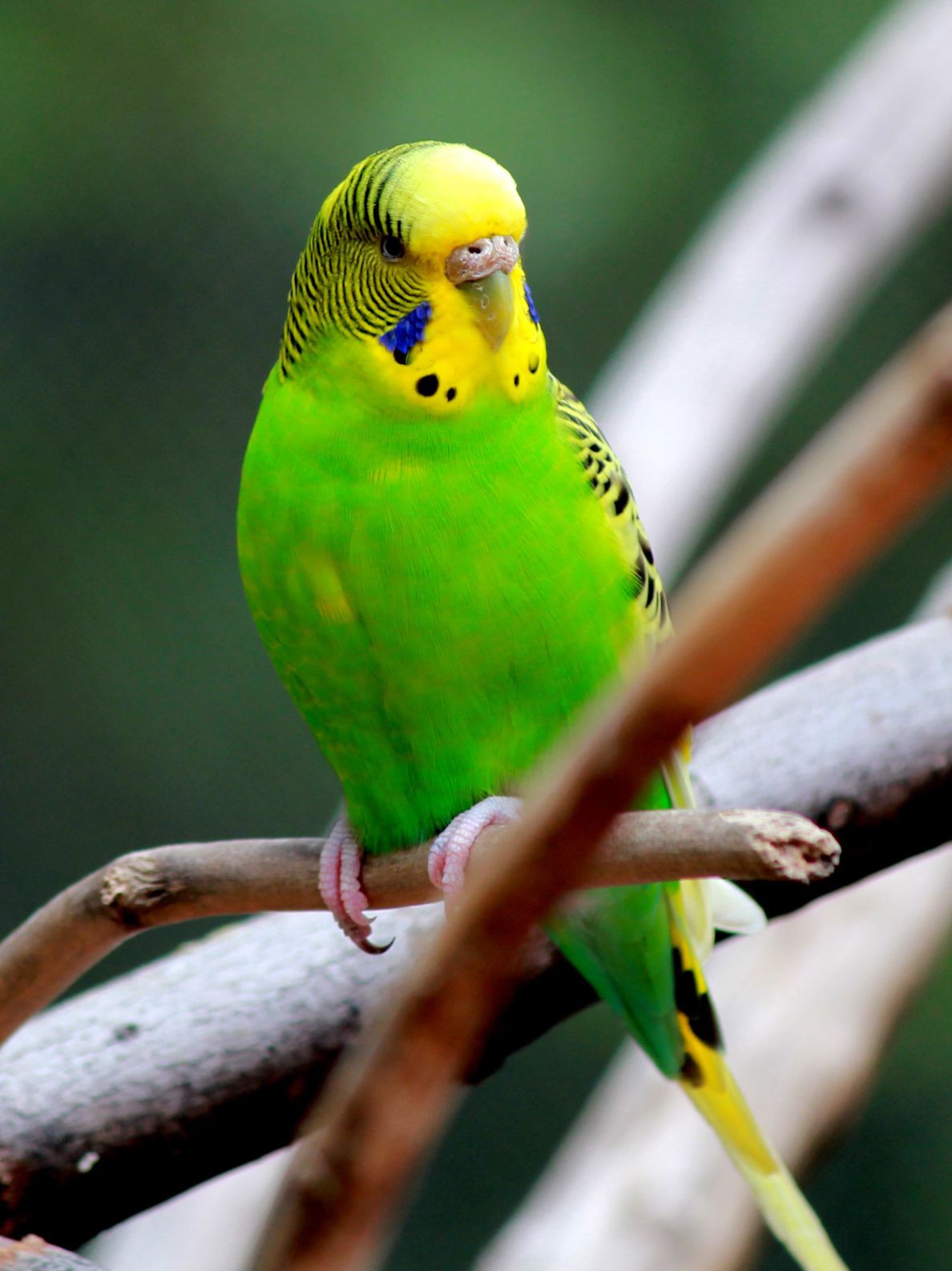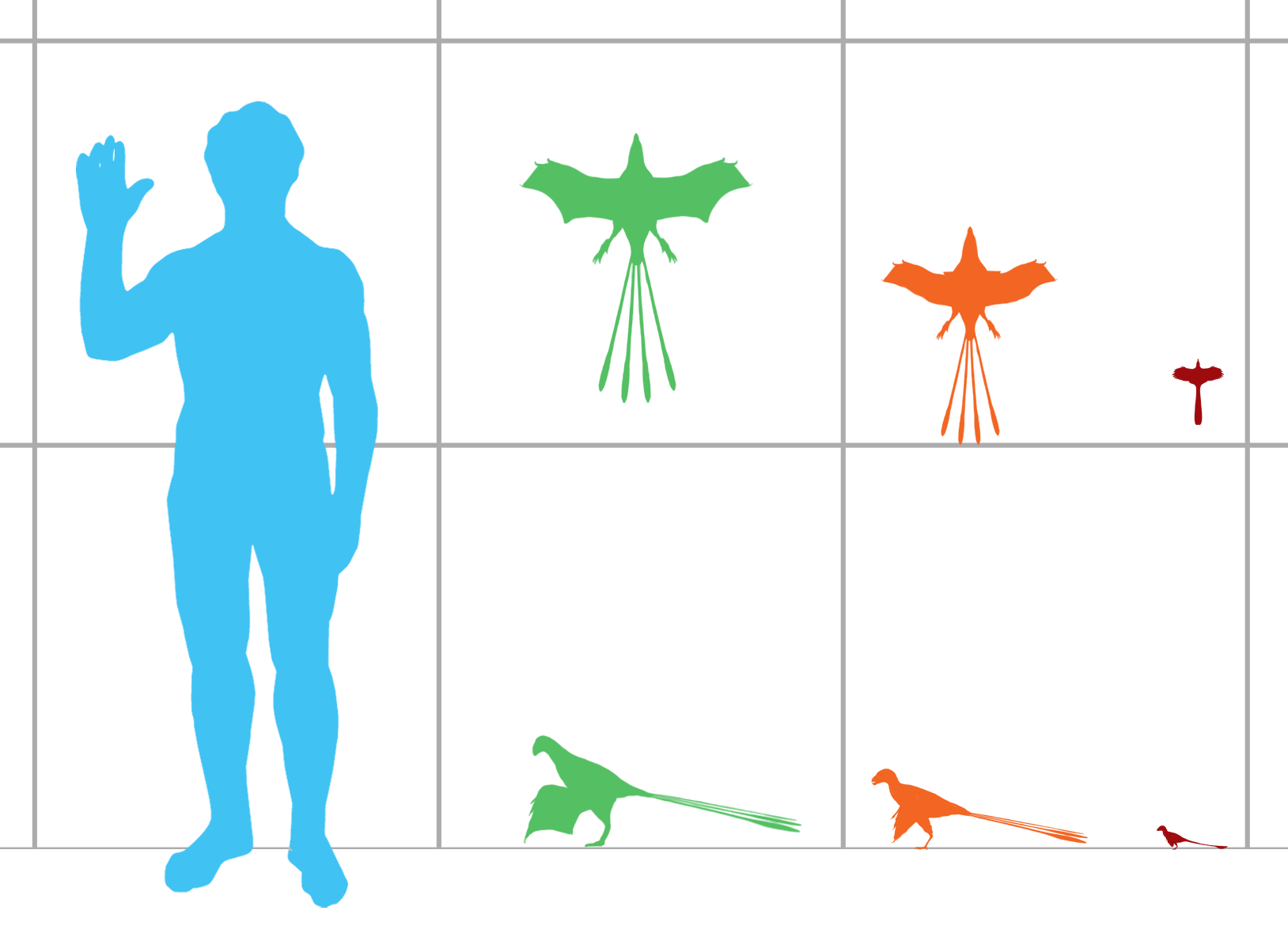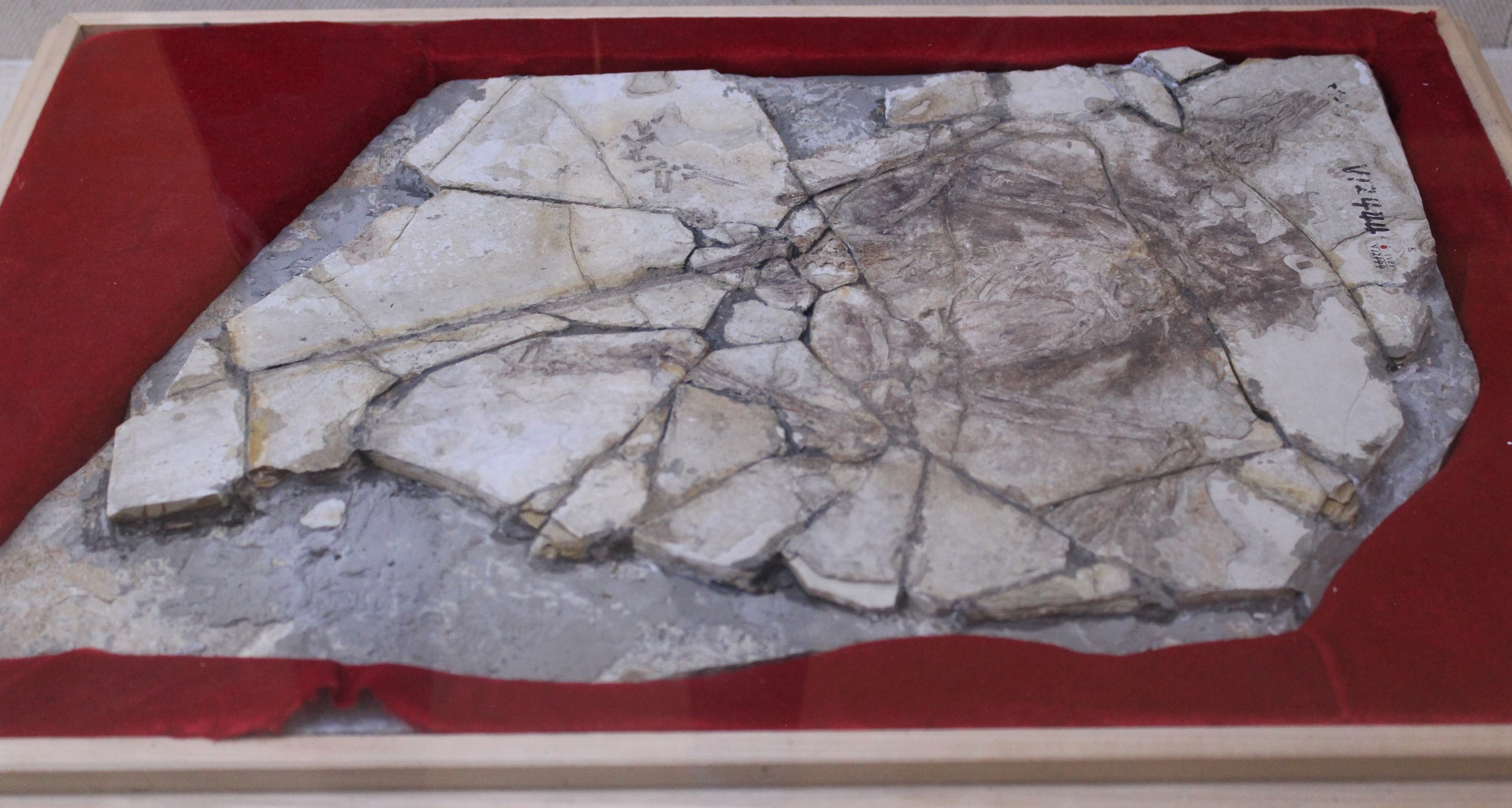|
Paraves
Paraves are a widespread group of theropod dinosaurs that originated in the Middle Jurassic period. In addition to the extinct dromaeosaurids, troodontids, anchiornithids, and possibly the scansoriopterygids, the group also contains the avialans, among which are the over ten thousand species of living birds. Early members of Paraves are well known for the possession of an enlarged claw on the second digit of the foot, which was held off the ground when walking in some species. Description Like other theropods, all paravians are bipedal, walking on their two hind legs. The teeth of primitive paravians were curved and serrated, but not blade-like except in some specialized species such as '' Dromaeosaurus albertensis''. The serrations on the front edge of dromaeosaurid and troodontid teeth were very small and fine, while the back edge had serrations which were very large and hooked. Most of the earliest paravian groups were carnivorous, though some smaller species (especiall ... [...More Info...] [...Related Items...] OR: [Wikipedia] [Google] [Baidu] |
Bird
Birds are a group of warm-blooded vertebrates constituting the class Aves (), characterised by feathers, toothless beaked jaws, the laying of hard-shelled eggs, a high metabolic rate, a four-chambered heart, and a strong yet lightweight skeleton. Birds live worldwide and range in size from the bee hummingbird to the ostrich. There are about ten thousand living species, more than half of which are passerine, or "perching" birds. Birds have whose development varies according to species; the only known groups without wings are the extinct moa and elephant birds. Wings, which are modified forelimbs, gave birds the ability to fly, although further evolution has led to the loss of flight in some birds, including ratites, penguins, and diverse endemic island species. The digestive and respiratory systems of birds are also uniquely adapted for flight. Some bird species of aquatic environments, particularly seabirds and some waterbirds, have further evolved for swimm ... [...More Info...] [...Related Items...] OR: [Wikipedia] [Google] [Baidu] |
Anchiornithidae
Anchiornithidae ("near birds") is a family of eumaniraptorans which could be the basalmost family of birds (in the general sense) in the clade Avialae. Anchiornithids have been classified at varying positions in the maniraptoran tree, with some scientists classifying them as a distinct family, a basal subfamily of Troodontidae, members of Archaeopterygidae, or an assemblage of dinosaurs that are an evolutionary grade within Avialae or Paraves. Description Anchiornithids share many general features with other Paraves and early avialans. They were small and lightly-built feathered carnivores, similar in biology to ''Archaeopteryx'', early dromaeosaurids like '' Microraptor'', and particularly troodontids. They are almost exclusively known from Late Jurassic Chinese deposits, although '' Ostromia'' was discovered in Germany and '' Yixianosaurus'' (a putative member of the group only known from forelimbs) is believed to hail from the early Cretaceous. Most had long legs, arms, ... [...More Info...] [...Related Items...] OR: [Wikipedia] [Google] [Baidu] |
Imperobator
''Imperobator'' ("powerful warrior") is a genus of paravian theropod that lived during the Maastrichtian stage of the Late Cretaceous period in what is now Antarctica. It contains a single species, ''I. antarcticus'', recovered from the Snow Hill Island Formation. Before its description, it was informally nicknamed the "Naze dromaeosaur", despite the lack of a "sickle claw" characteristic of the group. In 2019, the describing authors suggested that ''Imperobator'' was about the same size as '' Utahraptor''. Discovery and naming The only described species is known from a single specimen, UCMP 276000, which was first uncovered in 2003 at the early Maastrichtian-aged Cape Lamb Member of the Snow Hill Island Formation on James Ross Island, Antarctica. The Cape Lamb Member has been dated to the early Maastrichtian, about 71 million years ago. UCMP 276000 consists of an incomplete isolated left pes including a portion of the tibia, an incomplete astragalus, a partial calcaneus and fi ... [...More Info...] [...Related Items...] OR: [Wikipedia] [Google] [Baidu] |
Dromaeosauridae
Dromaeosauridae () is a family of feathered theropod dinosaurs. They were generally small to medium-sized feathered carnivores that flourished in the Cretaceous Period. The name Dromaeosauridae means 'running lizards', from Greek ('), meaning 'runner', and ('), meaning 'lizard'. In informal usage, they are often called raptors (after ''Velociraptor''), a term popularized by the film ''Jurassic Park''; a few types include the term "raptor" directly in their name and have come to emphasize their bird-like appearance and speculated bird-like behavior. Dromaeosaurid fossils have been found across the globe in North America, Europe, Africa, Asia, South America and Antarctica, with some fossils giving credence to the possibility that they inhabited Australia as well. They first appeared in the mid-Jurassic Period (late Bathonian stage, about 167 million years ago) and survived until the end of the Cretaceous (Maastrichtian stage, 66 ma), existing until the Cretaceous–Paleogene ... [...More Info...] [...Related Items...] OR: [Wikipedia] [Google] [Baidu] |
Scansoriopterygidae
Scansoriopterygidae (meaning "climbing wings") is an extinct family of climbing and gliding maniraptoran dinosaurs. Scansoriopterygids are known from five well-preserved fossils, representing four species, unearthed in the Tiaojishan Formation fossil beds (dating to the mid-late Jurassic Period) of Liaoning and Hebei, China. '' Scansoriopteryx heilmanni'' (and its likely synonym ''Epidendrosaurus ninchengensis'') was the first non-avian dinosaur found that had clear adaptations to an arboreal or semi-arboreal lifestyle–it is likely that they spent much of their time in trees. Both specimens showed features indicating they were juveniles, which made it difficult to determine their exact relationship to other non-avian dinosaurs and birds. It was not until the description of '' Epidexipteryx hui'' in 2008 that an adult specimen was known. In 2015, the discovery of another, larger adult specimen belonging to the species '' Yi qi'' showed that scansoriopterygids were not only ... [...More Info...] [...Related Items...] OR: [Wikipedia] [Google] [Baidu] |
Troodontidae
Troodontidae is a clade of bird-like theropod dinosaurs. During most of the 20th century, troodontid fossils were few and incomplete and they have therefore been allied, at various times, with many dinosaurian lineages. More recent fossil discoveries of complete and articulated specimens (including specimens which preserve feathers, eggs, embryos, and complete juveniles), have helped to increase understanding about this group. Anatomical studies, particularly studies of the most primitive troodontids, like '' Sinovenator'', demonstrate striking anatomical similarities with ''Archaeopteryx'' and primitive dromaeosaurids, and demonstrate that they are relatives comprising a clade called Paraves. Description Troodontids are a group of small, bird-like, gracile maniraptorans. All troodontids have unique features of the skull, such as large numbers of closely spaced teeth in the lower jaw. Troodontids have sickle-claws and raptorial hands, and some of the highest non- avian e ... [...More Info...] [...Related Items...] OR: [Wikipedia] [Google] [Baidu] |
Microraptor Gui
''Microraptor'' (Greek, μικρός, ''mīkros'': "small"; Latin, ''raptor'': "one who seizes") is a genus of small, four-winged dromaeosaurid dinosaurs. Numerous well-preserved fossil specimens have been recovered from Liaoning, China. They date from the early Cretaceous Jiufotang Formation (Aptian stage), 125 to 120 million years ago. Three species have been named (''M. zhaoianus'', ''M. gui'', and ''M. hanqingi''), though further study has suggested that all of them represent variation in a single species, which is properly called ''M. zhaoianus''. ''Cryptovolans'', initially described as another four-winged dinosaur, is usually considered to be a synonym of ''Microraptor''. Like ''Archaeopteryx'', well-preserved fossils of ''Microraptor'' provide important evidence about the evolutionary relationship between birds and earlier dinosaurs. ''Microraptor'' had long pennaceous feathers that formed aerodynamic surfaces on the arms and tail but also on the legs. This led pa ... [...More Info...] [...Related Items...] OR: [Wikipedia] [Google] [Baidu] |
Troodontidae
Troodontidae is a clade of bird-like theropod dinosaurs. During most of the 20th century, troodontid fossils were few and incomplete and they have therefore been allied, at various times, with many dinosaurian lineages. More recent fossil discoveries of complete and articulated specimens (including specimens which preserve feathers, eggs, embryos, and complete juveniles), have helped to increase understanding about this group. Anatomical studies, particularly studies of the most primitive troodontids, like '' Sinovenator'', demonstrate striking anatomical similarities with ''Archaeopteryx'' and primitive dromaeosaurids, and demonstrate that they are relatives comprising a clade called Paraves. Description Troodontids are a group of small, bird-like, gracile maniraptorans. All troodontids have unique features of the skull, such as large numbers of closely spaced teeth in the lower jaw. Troodontids have sickle-claws and raptorial hands, and some of the highest non- avian e ... [...More Info...] [...Related Items...] OR: [Wikipedia] [Google] [Baidu] |
Scansoriopterygidae
Scansoriopterygidae (meaning "climbing wings") is an extinct family of climbing and gliding maniraptoran dinosaurs. Scansoriopterygids are known from five well-preserved fossils, representing four species, unearthed in the Tiaojishan Formation fossil beds (dating to the mid-late Jurassic Period) of Liaoning and Hebei, China. '' Scansoriopteryx heilmanni'' (and its likely synonym ''Epidendrosaurus ninchengensis'') was the first non-avian dinosaur found that had clear adaptations to an arboreal or semi-arboreal lifestyle–it is likely that they spent much of their time in trees. Both specimens showed features indicating they were juveniles, which made it difficult to determine their exact relationship to other non-avian dinosaurs and birds. It was not until the description of '' Epidexipteryx hui'' in 2008 that an adult specimen was known. In 2015, the discovery of another, larger adult specimen belonging to the species '' Yi qi'' showed that scansoriopterygids were not only ... [...More Info...] [...Related Items...] OR: [Wikipedia] [Google] [Baidu] |
Overoraptor
''Overoraptor'' (meaning "piebald thief") is a genus of paravian theropod dinosaurs, which was closely related to ''Rahonavis'', from the Late Cretaceous ( Cenomanian) Huincul Formation of Gondwana, present-day Argentina. It includes one species, ''Overoraptor chimentoi''. Etymology The generic name ''Overoraptor'' is derived from the Spanish ''overo'', meaning piebald, in reference to the color of the fossil bones. The specific name, ''O. chimentoi'', refers to Roberto Nicolás Chimento, who discovered the remains. Description and classification Although the holotype is very fragmentary, it exhibits an unusual combination of features that reveal a novel phylogenetic position. The forelimb exhibits a bird-like morphology that includes, among other things, a robust ulna, while the hindlimb appears to have been adapted for a cursorial lifestyle. A "sickle-claw" similar to that of dromaeosaurs is also present. Both a flight-adapted forelimb and a cursorial hindlimb are presen ... [...More Info...] [...Related Items...] OR: [Wikipedia] [Google] [Baidu] |
Unenlagiidae
Unenlagiidae is a proposed family of eumaniraptoran paravians that includes the subfamilies Unenlagiinae and possibly Halszkaraptorinae. Fossils of both subfamilies have been found in both Gondwanan and Laurasian deposits. The biology of the group suggests that some members were semiaquatic specialists. Classification The family Unenlagiidae traditionally includes the same members as the previously named subfamily of Dromaeosauridae, Unenlagiinae, so Unenlagiidae was often seen as a synonym of Dromaeosauridae. However, since the 2010s, there have been subsequent studies that have questioned this placement, necessitating the revival of the family name. Some have placed unenlagiids as outside Dromaeosauridae, being the sister taxon or closely related to Avialae, while others have placed the newly recognized halszkaraptorines in the family, as basal deinonychosaurs outside Dromaeosauridae and Troodontidae Troodontidae is a clade of bird-like theropod dinosaurs. During mos ... [...More Info...] [...Related Items...] OR: [Wikipedia] [Google] [Baidu] |

.jpg)





